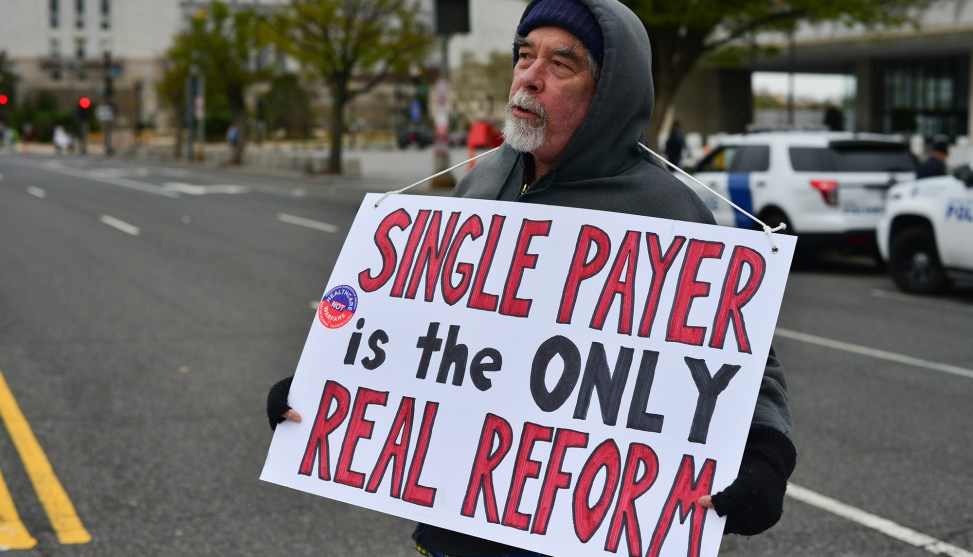
Miguel Juarez Lugo/ZUMA
The Washington Post declares today that enthusiasm for full-blown Medicare-for-All is waning:
Democrats back off once-fervent embrace of Medicare-for-all
Leaning back on a black leather sofa as her campaign bus rumbled toward Fort Dodge, Kamala D. Harris tried to explain why she spent months defending a plan to replace private health insurance with Medicare-for-all, only to switch to a more modest proposal that would allow private insurance to continue after all.
“I don’t think it was any secret that I was not entirely comfortable — that’s an understatement,” Harris said, holding a to-go cup from a Mexican restaurant at a recent stop. “I finally was like, ‘I can’t make this circle fit into a square.’ I said: ‘We’re going to take hits. People are going to say she’s waffling. It’s going to be awful.’ ” But, she said, she decided it was worth it.
So what is Harris’s plan these days? Here’s the nutshell version:
- Anyone can immediately buy into Medicare, which will be improved in various ways.
- A 10-year phase-in of an expanded Medicare for newborns and the uninsured.
- Allow private insurers to offer coverage similar to today’s Medicare Advantage program.
- “At the end of the ten-year transition, every American will be a part of this new Medicare system. They will get insurance either through the new public Medicare plan or a Medicare plan offered by a private insurer within that system.”
That’s fine. I have no argument with any of it. However, it leaves out a big issue: how much will people have to pay for it? Is it literally free, paid for entirely by taxes? Or do consumers have to pay an annual premium? Does the premium increase with income, like Obamacare? If so, what’s the top premium level? And what are the caps on copays, deductibles, and out-of-pocket expenses?
The truth is that Obamacare could basically be fixed with a couple of simple changes:
- Higher premium subsidies all the way through the middle class, including an absolute cap of 8 percent of income no matter how rich you are.
- Stricter rules on deductibles and OOP, which would also apply to private plans.
- Add a public option to buy in to Medicare.
That’s it. There are other things it would be nice to fiddle with, but those three would turn Obamacare into something very, very close to a national health care plan. Whether you prefer this to Harris’s plan or Sanders’ plan is, frankly, more a matter of personality and mood than it is of actual dedication to the best possible health care. All three of them would work fine.













